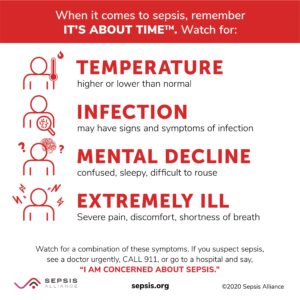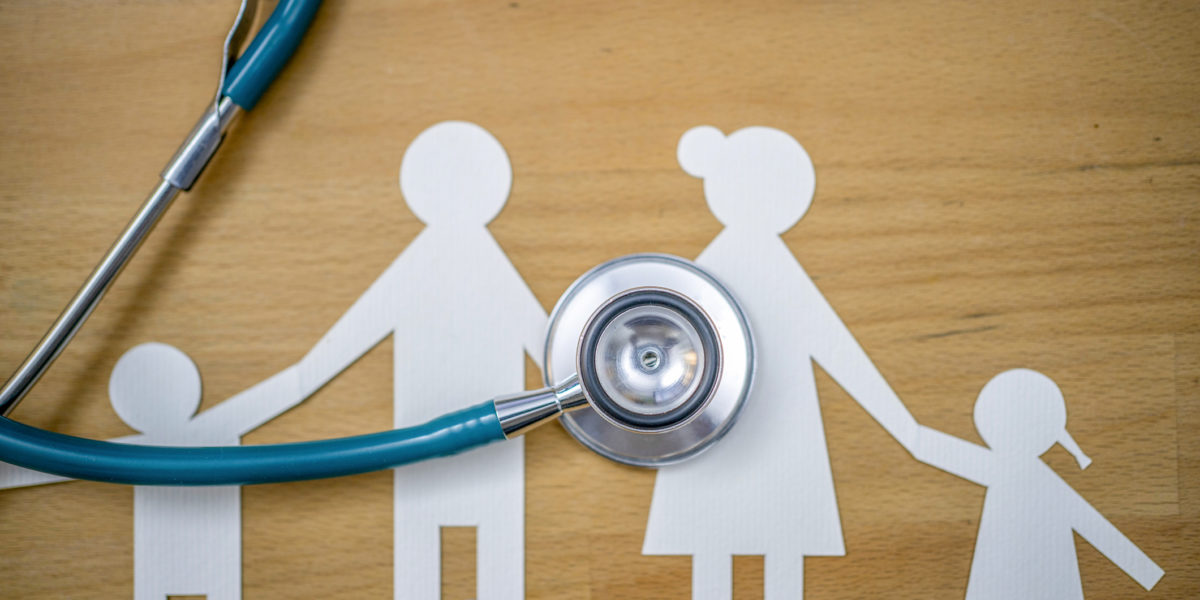Sepsis is a life-threatening condition that occurs when the body has an extreme reaction to an infection. Like falling dominoes, sepsis triggers a rapid escalation of problems that can lead to tissue damage, organ failure and death if not treated in time.
Each year, about 1.7 million people in the United States develop sepsis, and about 16% (or 270,000) of those people die, according to statistics from the Centers for Disease Control and Prevention. Among patients who die in a hospital, one in three has sepsis, making it a top cause of death in the intensive care unit.
Diagnosing and treating sepsis can be challenging, in part because its symptoms can be vague or mistaken for other health problems.
Symptoms of sepsis
Symptoms include:
- High heart rate.
- Low blood pressure.
- Breathing problems.
- Fever.
- Shivering.
- Confusion.
- Extreme pain.
At higher risk are:
- People 65 and older.
- People with chronic medical conditions.
- People with weakened immune systems.
- Children younger than age 1.
- People recently hospitalized with a severe illness.
Advances in the detection and treatment of sepsis, along with earlier treatment protocols, have made it easier for providers in the hospital to diagnose sepsis and treat patients. In the hospital that includes the use of technology that automatically scans electronic health records and alerts providers about changes in a patient’s condition that might indicate sepsis.
Here’s what to know about the sepsis symptoms, risk factors and prevention.

Timing matters
Not all patients who have an infection will go on to develop sepsis, but everyone who is diagnosed with sepsis already has an infection. It can start almost anywhere, but sepsis most commonly results from infections affecting the skin, the lung, urinary or gastrointestinal tract.
Although many people associate sepsis with hospitals, most cases begin in the community. About 85% of patients with sepsis already have symptoms when they come to the emergency room.
Timely treatment is critical for patients who develop sepsis. Early interventions like antibiotics can help avoid serious effects, such as organ failure or tissue damage. Sepsis symptoms can be vague or conflicting, so make your health care providers aware of even the subtle signs that could suggest sepsis, such as a high heart rate or shortness of breath requiring oxygen when you’ve never had those symptoms before. They could be a sign that your heart or lungs are being affected by sepsis.
In the hospital
Health care providers have more help these days when it comes to recognizing signs of sepsis. At ChristianaCare, our sepsis alert system works through our electronic health record to let nurses and other providers know when patients meet specific criteria that could be an indication of sepsis and acts as an early warning system for your health care team. When sepsis is suspected, it’s important to keep communicating with your provider, especially if you notice a change in your symptoms and how you feel.
Three ways to reduce your risk
- One of the biggest ways to reduce your risk of developing sepsis is to practice good hygiene. If you get a cut or scrape on your skin, be sure to thoroughly clean the wound.
- If you develop an internal infection, such as pneumonia or E. coli, be sure to seek medical help if your symptoms don’t improve or you start to develop additional symptoms.
- Lastly, make sure that everyone coming into contact with you – including your health care professionals – washes their hands.



